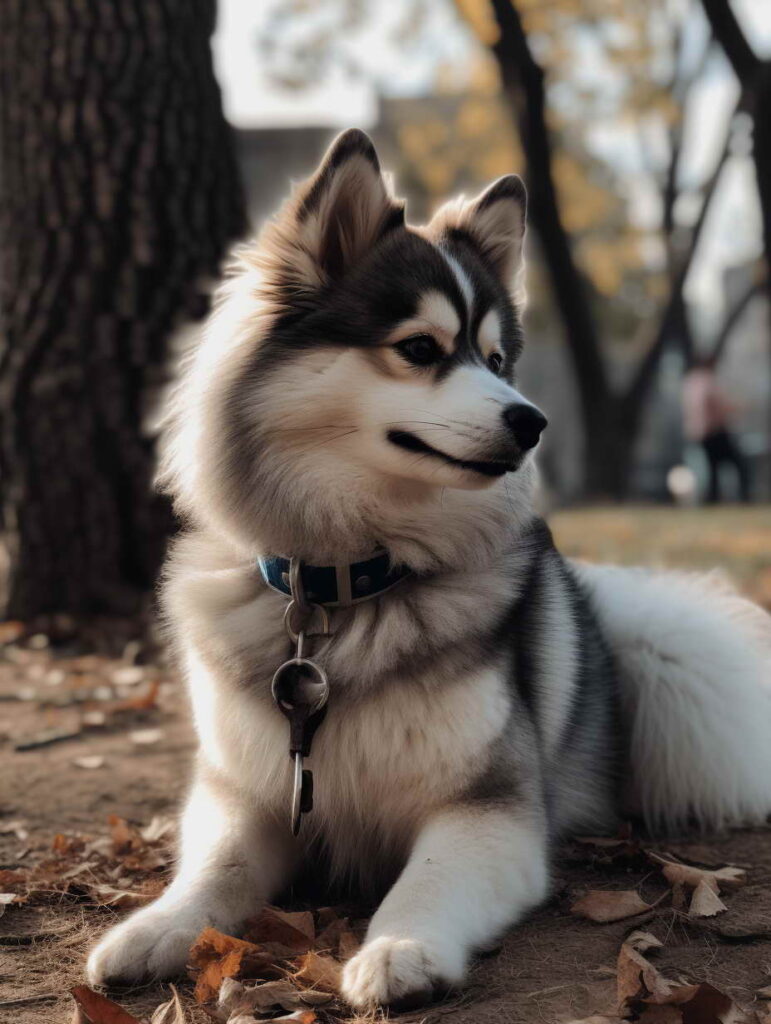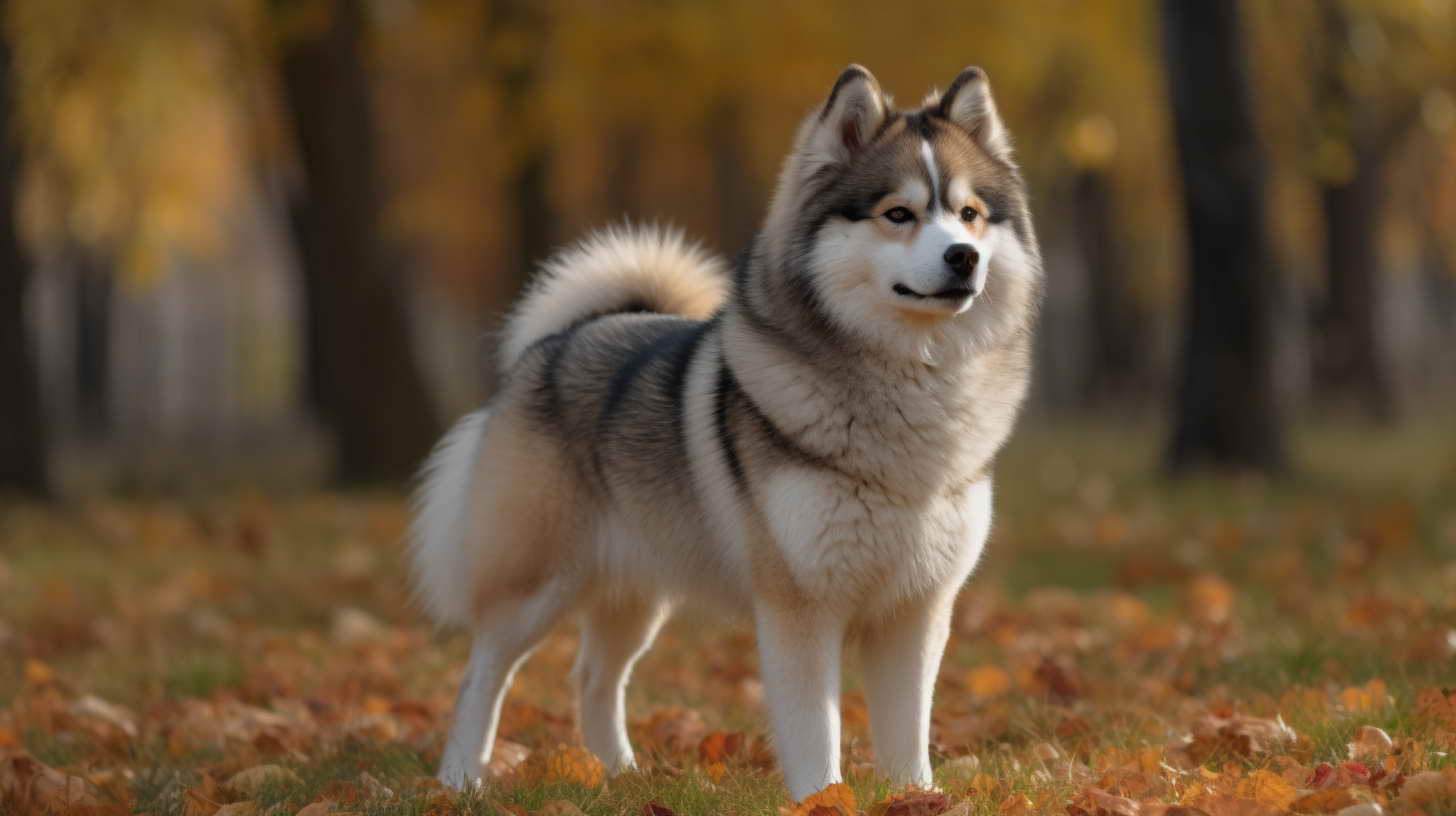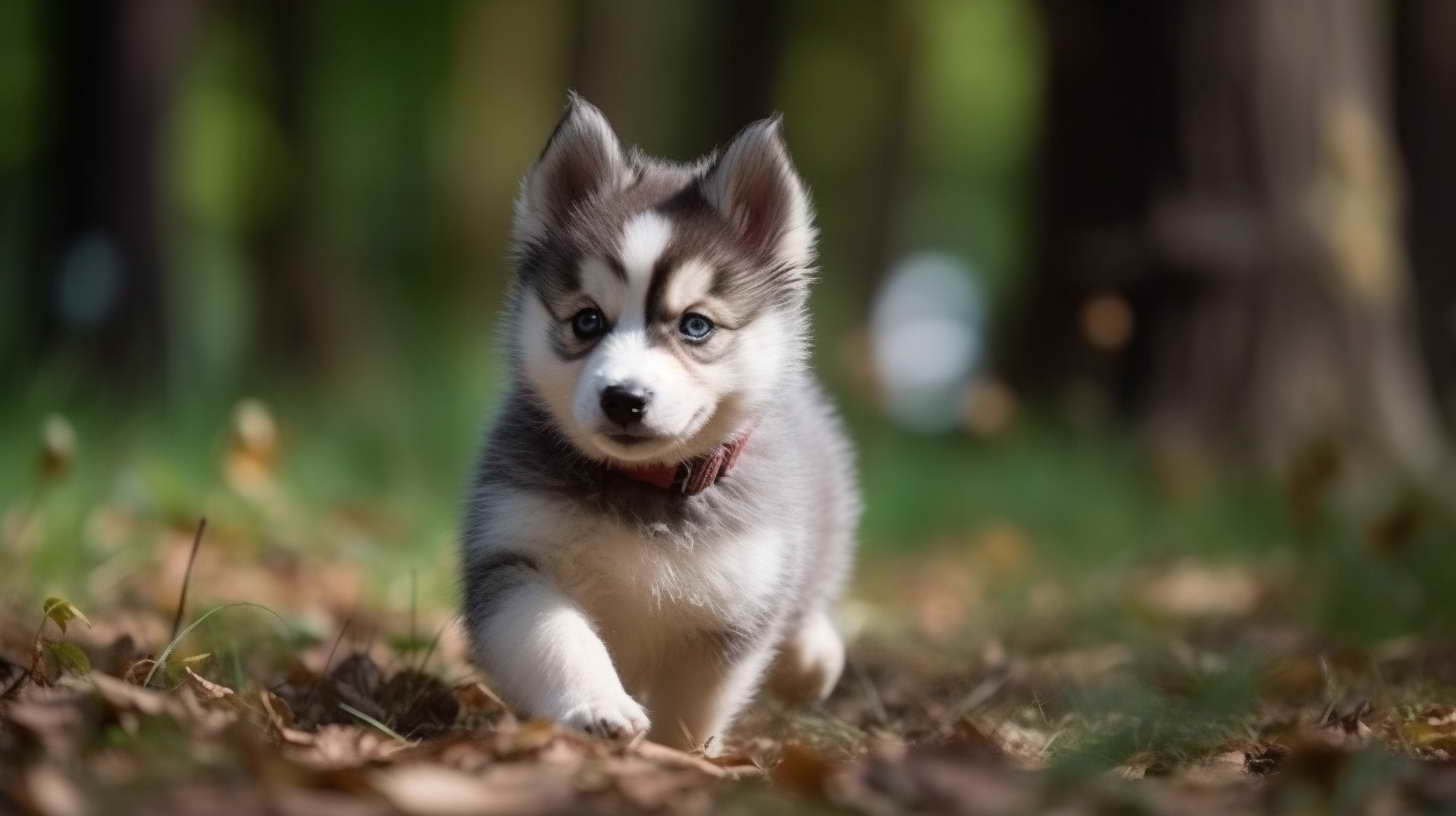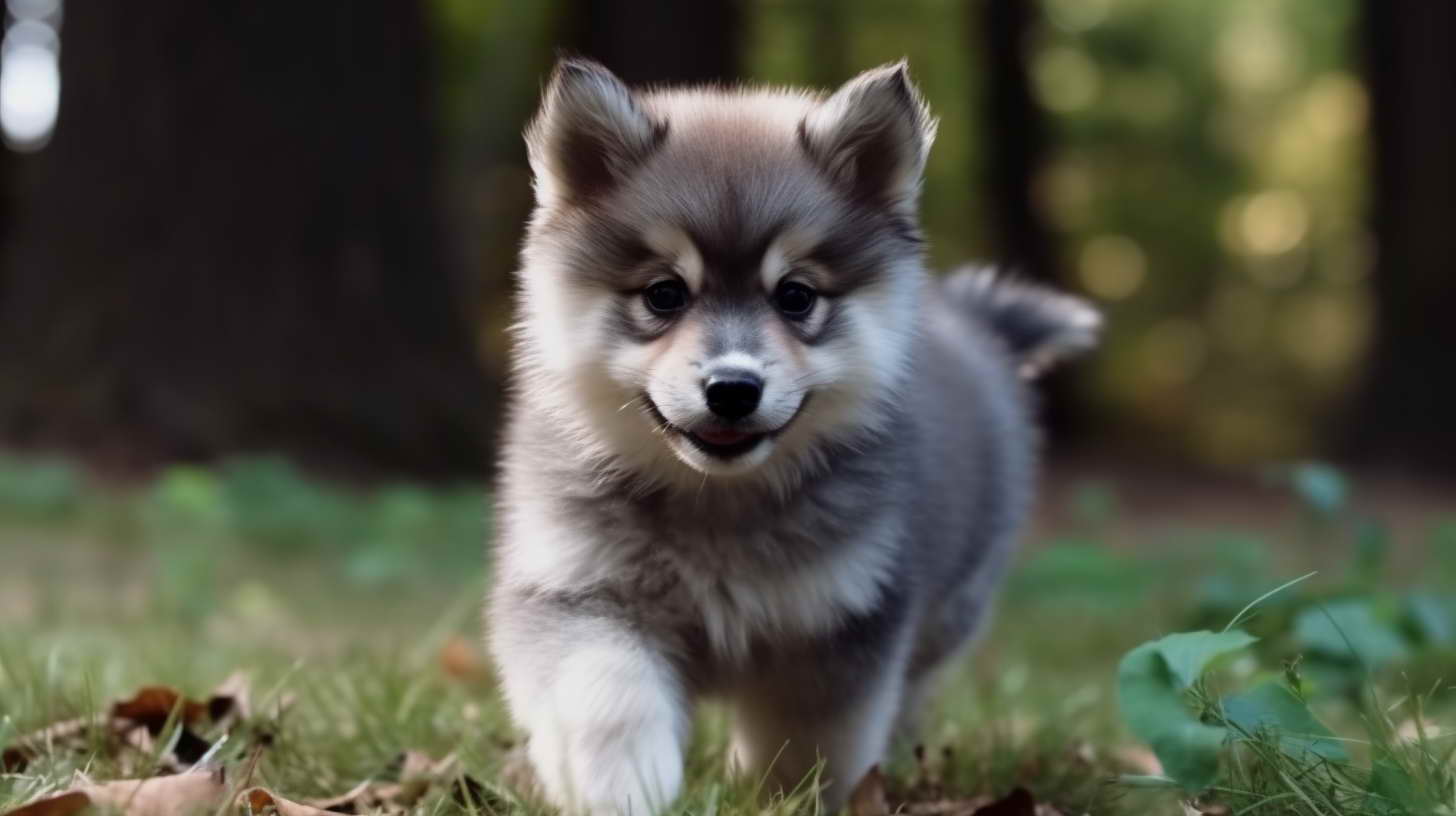
The Pomsky Dog Breed – A Fascinating Canine Companion
PETSIDI – The pomsky is a relatively new dog breed that has become incredibly popular over the last decade. This designer breed is a cross between a Pomeranian and a Siberian Husky, combining the best traits from each parent breed.
History of the Pomsky
The pomsky was first bred around 2010 by crossing a male Siberian Husky with a female Pomeranian through artificial insemination due to the large size difference between the parent breeds.
Breeders found that by crossing these two purebreds, they could produce a dog with the playful, energetic nature of the Siberian Husky and the affectionate, compact size of the Pomeranian. This new breed appealed to many dog lovers looking for a unique dog.
While the Pomsky Club of America was founded in 2012 to promote responsible breeding, the pomsky is not currently recognized as an official breed by the American Kennel Club. However, they have rapidly grown in popularity as a designer dog breed.

Appearance of Pomskies
The appearance of pomsky dogs can vary significantly since they are a crossbreed dog and each puppy can inherit different physical traits from their parents.
In general, most pomskies will have a fox-like face, pointed ears, a fluffy double coat, and a curled, plumed tail. Their coat is usually a mix of their parent breeds’ colors and can be black, white, brown, grey, or reddish.
One of the most defining features of pomsky puppies is their striking blue eyes. Most will have brilliant blue eyes as puppies that fade to a lighter blue or brown as they mature.
Pomsky size also varies quite a bit depending on whether they take after the Pomeranian or Husky parent. They typically reach 10 to 15 inches tall at the shoulder and weigh 15 to 30 pounds.
Pomsky Temperament
The temperament of the pomsky is where their hybrid vigor shines through, as they tend to be highly intelligent, energetic, and affectionate.
Pomskies combine the playful personality of the Siberian Husky with the loyal and loving nature of the Pomeranian. They are very social dogs that bond strongly with their owners and do not like to be left alone for long periods.
These dogs are often described as mischievous escape artists due to their high energy and inquisitive nature. Pomskies need regular exercise and plenty of mental stimulation to stay happy and well-behaved.
Without proper training, pomskies can be prone to nuisance barking, digging, and separation anxiety. However, in the right home, they make wonderfully devoted companions.

Taking Care of a Pomsky
Caring for a pomsky dog is generally high maintenance due to their thick double coat and high energy needs. Here are some key Pomsky care requirements:
- Grooming – Pomskies require daily brushing to control shedding and should be professionally groomed often to keep their coat free of mats.
- Exercise – Pomskies need 45+ minutes of vigorous exercise like walking, running, or playing fetch every day. They also enjoy activities like agility and obedience training.
- Training – Early socialization and obedience training are crucial for pomskies. Their high intelligence makes them very trainable dogs.
- Diet – A high-quality dog food formulated for active medium-small breed dogs is ideal. Treats should be limited due to pomskies’ tendency to obesity.
- Health – Minor health issues like hypoglycemia, eye problems, dental disease, and patellar luxation can occur. Adults should have annual vet checkups.
A pomsky puppy can make an amazing pet and companion in the right home. However, potential pomsky owners should consider whether they can meet this hybrid’s substantial daily care needs.
Health Issues in Pomskies
While pomskies are generally robust when bred properly, there are some health problems they may inherit from their purebred parents:
- Patellar Luxation – Dislocated kneecaps are common in small dogs. Mild cases cause temporary lameness. Severe cases require corrective surgery.
- Hypoglycemia – Low blood sugar frequently impacts pomsky puppies. Feed them frequent small meals of high-energy food.
- Eye Problems – Pomeranians are prone to juvenile cataracts. Pomskies should have eye exams to check for inherited conditions.
- Hip Dysplasia – Loose hip joints lead to arthritis in Huskies. Have a vet check pokies hips and watch their weight.
- Dental Disease – Smaller dog breeds are prone to periodontal disease. Brush pomskies’ teeth, feed dental chews and have professional cleanings done.
Reputable pomsky breeders will screen breeding dogs for these hereditary health problems to reduce their prevalence in the breed. Be sure to keep up with vet care to catch any issues early.

Finding a Healthy Pomsky Puppy
Searching for a healthy pomsky puppy from a responsible breeder is crucial but can be challenging due to its surge in popularity. Here are some tips:
- Avoid pet stores or online sellers offering pomskies at reduced prices. Only consider respected local breeders.
- Ask to see the parents’ health clearances for conditions like hip dysplasia, eye disease, and patellar luxation.
- Request proof that the breeding pair is not closely related to reduce inbreeding. Genetic diversity is important.
- Make sure you can visit the breeder’s facility in person to check that their dogs are well cared for in clean conditions.
- A good breeder will ask you questions to ensure a pomsky puppy is a good match for your lifestyle.
- Be prepared for waitlists. Reputable breeders often have long waitlists due to pomskies’ popularity. Avoid those promising immediate availability.
Take your time finding the right ethical pomsky breeder. Rushing the search and purchase process often leads to future health and behavioral issues.
How Much Does a Pomsky Cost?
The average cost for a pomsky from a reputable breeder ranges from $1,000 to $5,000. The price depends on factors like:
- Breeder’s Location – Pomskies bred in areas like California, New York, or Canada will be more expensive than in rural areas.
- Breeding Facility – Medical screening and excellent facilities increase breeders’ overhead costs.
- Parent Dogs’ Pedigree – A champion show dog pedigree or rare coat colors like Merle will raise the price.
- Litter Availability – Pomsky litters often have long waitlists, allowing breeders to charge more.
- Individual Puppy – Puppies with show potential or rare blue eyes may cost more within a litter.
- Gender – Male pomsky puppies tend to cost a few hundred dollars more than females.
- Time of Year – Holiday seasons lead to higher demand and prices for pomsky puppies.
While pomskies are one of the pricier designer breeds, they make wonderful family dogs for the right owners. Be wary of unusually low prices, as this indicates puppy mills rather than responsible pomsky breeders.

Is a Pomsky the Right Dog For You?
Deciding if a pomsky will be the right addition to your family requires honestly assessing if you can meet this breed’s needs:
- Pomskies have high exercise requirements. Can you commit to daily walks, playtime, and training?
- Their thick double coat needs vigilant grooming to prevent matting and shedding issues.
- They can be strong-willed and difficult to train. Do you have time for consistent positive reinforcement training?
- Pomskies may not do well with very young children due to their small size and tendency to be mouthy when playful.
- They require substantial time and attention. Pomskies are prone to separation anxiety when left alone.
- First-time dog owners may find pomskies to be a difficult breed to start with due to their high intelligence and energy levels.
If you can provide the right environment, pomskies make wonderfully affectionate and entertaining companions. Here are some characteristics of households that are often a good fit for a pomsky:
- Active singles, couples, and families able to give them adequate exercise and training
- Households with older children rather than very young kids
- Owners with flexible schedules that allow plenty of time for interaction and supervision
- Experience with high-energy and highly intelligent dog breeds
- Willingness to invest in training classes right from the start
- Ability to provide mental stimulation through interactive toys, food puzzles, etc.
- Access to safely fenced areas for off-leash playtime
- Tolerance for higher grooming maintenance
While pomskies have their challenges, their playful, loyal personalities make them rewarding pets in the right homes. Work closely with your breeder to determine if a pomsky will fit your lifestyle.
Common Questions about Pomskies
Here are answers to some frequently asked questions about the adorable pomsky breed:
Are pomskies hypoallergenic dogs?
No, pomskies are not hypoallergenic despite having some Pomeranian ancestry. Their double coat sheds substantially, especially during the seasonal blowing of the undercoat. People with dog allergies will likely react to pomsky dander.
How long do pomskies live?
Properly bred and cared for pomskies have a typical life expectancy of 12 to 16 years. Make sure to keep up with vet visits, nutrition, exercise, and grooming to support your pomsky’s longevity.
Do pomskies bark a lot?
Pomskies tend to be frequent, enthusiastic barkers. Early training is key to curbing nuisance barking behaviors. Provide plenty of exercise, toys, and quality time with your pomsky to prevent barking from boredom.
Are pomskies good family dogs?
Socialized, trained pomskies can be great family dogs in homes with older, dog-savvy kids. However, their small size makes them fragile around toddlers. Pomskies also require substantial time, patience, and activity from owners.
Do pomskies shed a lot?
Yes, pomskies shed year-round and blow their coat twice per year. Their thick double coat requires daily brushing frequent bathing and professional grooming to control loose hair. People with allergies may struggle with their high dander levels.
The Unique Pomsky – An Appealing Designer Dog Breed
The pomsky offers the best traits of two popular purebreds – the playful, high-energy Siberian Husky and the affectionate, compact Pomeranian. This appealing crossbreed combines high intelligence, enthusiasm for life, striking good looks, and loyalty to their families.
However, along with their many great qualities, pomskies require committed owners willing to meet their substantial daily care and training needs. When acquired responsibly and cared for properly, a pomsky dog can be a treasured companion for many years to come.

Leave a Reply